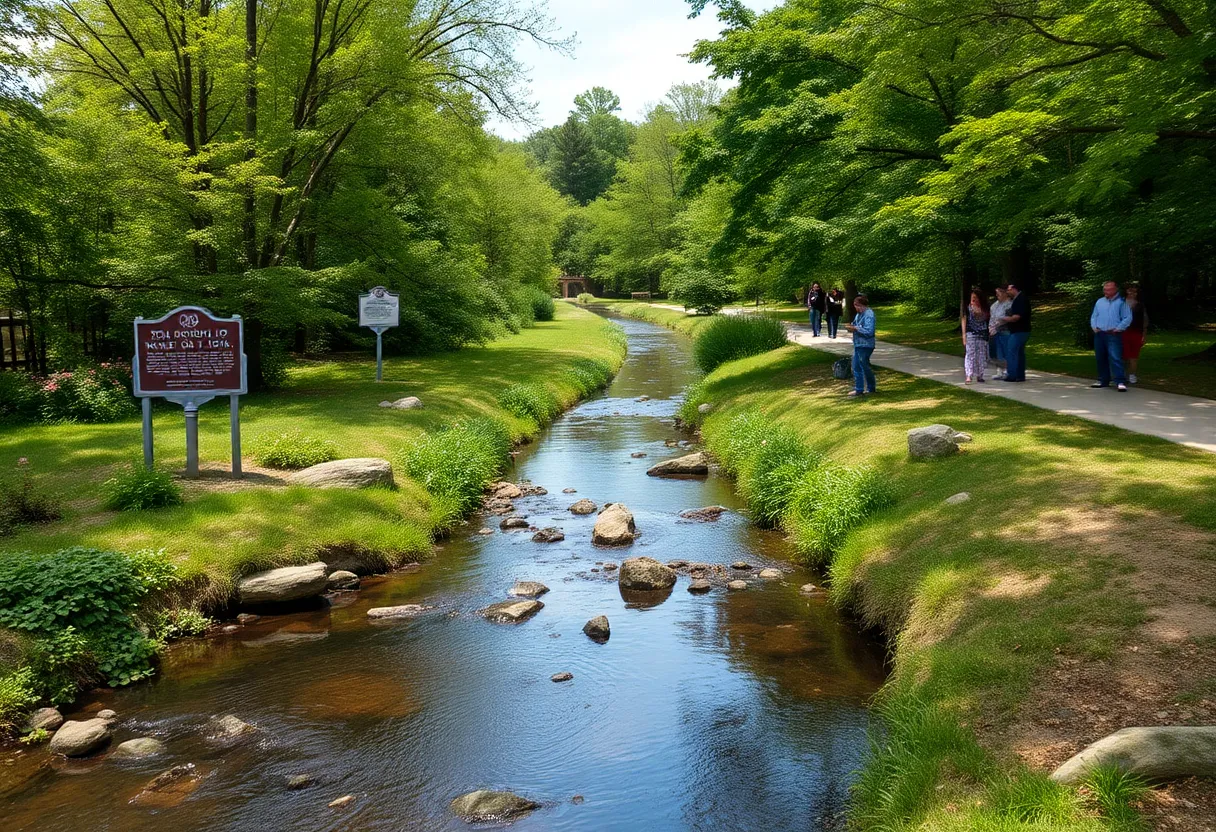Buffalo, NY, October 4, 2025
The Scajaquada Creek corridor in Buffalo has been officially designated as a National Heritage Area, recognizing its historical and environmental significance. This designation highlights the area’s indigenous and industrial heritage and opens opportunities for federal funding to support preservation and restoration efforts. Local leaders are optimistic about community engagement opportunities, focusing on education about the corridor’s history, ecology, and the importance of sustainable stewardship.
Buffalo, NY: Scajaquada Creek Corridor Designated as National Heritage Area
Buffalo, NY – October 4, 2025: The Scajaquada Creek corridor has been officially designated as a National Heritage Area, marking a significant recognition of its historical and environmental importance to the city’s indigenous and industrial heritage. This milestone, announced recently, highlights the corridor’s role in shaping Buffalo’s cultural and natural landscape, potentially unlocking federal funding for preservation efforts.
Historical and Environmental Recognition
The designation underscores the Scajaquada Creek corridor’s deep ties to Buffalo’s past. For centuries, the area has served as a vital waterway, supporting indigenous communities who relied on it for sustenance and transportation long before European settlement. As Buffalo grew into an industrial powerhouse in the 19th and 20th centuries, the creek became integral to milling, shipping, and manufacturing activities that fueled the city’s economic boom. Today, this recognition aims to protect and interpret these layered histories, ensuring that the corridor’s legacy endures for future generations.
Environmentally, the Scajaquada Creek corridor stands out for its biodiversity and role in the local ecosystem. The creek flows through urban and suburban landscapes, providing habitats for various wildlife species and contributing to Buffalo’s green infrastructure. The National Heritage Area status emphasizes sustainable stewardship, addressing past industrial impacts like pollution while promoting restoration projects that enhance water quality and recreational access.
Local Celebration and Future Implications
Local leaders gathered to celebrate the designation, viewing it as a pivotal step toward revitalizing the area. The event highlighted community pride in the corridor’s multifaceted story, from its indigenous roots to its industrial evolution. This official acknowledgment by federal authorities positions the Scajaquada Creek corridor alongside other nationally significant sites, elevating its profile on both regional and national stages.
One of the most promising aspects of this designation is the potential for federal funding. National Heritage Areas often receive grants from the National Park Service and other agencies to support conservation, education, and public access initiatives. In Buffalo’s case, these resources could fund trail developments, habitat restoration, and infrastructure improvements along the creek. Such investments are expected to boost tourism, create jobs, and foster economic growth in surrounding neighborhoods.
Community Plans for Education and Engagement
Community groups are already mobilizing to capitalize on the designation through educational programs. These initiatives will focus on raising awareness about the corridor’s indigenous history, environmental challenges, and industrial contributions. Schools, nonprofits, and cultural organizations plan to develop curricula, workshops, and guided tours that engage residents of all ages. The goal is to build a sense of shared stewardship, encouraging participation in volunteer cleanups and advocacy efforts.
By integrating history, ecology, and community involvement, these programs aim to make the Scajaquada Creek corridor a living classroom. For instance, interactive exhibits could explore how indigenous peoples used the creek for fishing and agriculture, while modern segments might address ongoing efforts to mitigate urban runoff. This holistic approach ensures that the designation translates into tangible benefits for Buffalo’s diverse population.
Broader Context and Challenges
The path to this designation has not been without hurdles. Over the years, the Scajaquada Creek has faced degradation from industrial runoff, urban development, and even a tragic expressway project that bisected the area in the mid-20th century. Advocacy from environmentalists, historians, and local residents played a crucial role in pushing for this recognition, demonstrating years of collaborative effort.
Looking ahead, the designation brings opportunities but also responsibilities. Maintaining the corridor’s integrity will require ongoing partnerships between federal, state, and local entities. Buffalo’s experience with similar projects, such as the revitalization of the Niagara River waterfront, offers valuable lessons in balancing preservation with urban needs. As funding becomes available, priorities may include removing barriers to natural creek flow, enhancing pedestrian bridges, and planting native vegetation to support wildlife.
This National Heritage Area status for the Scajaquada Creek corridor represents more than a symbolic honor; it is a catalyst for positive change in Buffalo. By safeguarding its indigenous and industrial past while addressing present-day environmental concerns, the city can create a resilient, inclusive space that honors its history and enriches its future. Residents and visitors alike stand to benefit from a corridor that tells Buffalo’s story in vivid, accessible ways, fostering a deeper connection to the land and its people.
FAQ
What is the significance of the Scajaquada Creek corridor’s designation?
The Scajaquada Creek corridor has been officially designated a National Heritage Area, recognizing its historical and environmental significance to Buffalo’s indigenous and industrial past.
When was the designation announced?
The designation was announced on October 4, 2025, in Buffalo, NY.
What potential benefits does this designation bring?
This milestone could bring federal funding for preservation efforts along the Scajaquada Creek corridor.
What are community groups planning in response?
Community groups plan educational programs focused on the historical and environmental aspects of the Scajaquada Creek corridor.
How does the designation impact Buffalo’s history?
The designation highlights the corridor’s ties to Buffalo’s indigenous communities and its role in the city’s industrial development.
Key Features of the Scajaquada Creek Corridor National Heritage Area
| Feature | Description |
|---|---|
| Historical Significance | Ties to indigenous communities and Buffalo’s industrial past |
| Environmental Importance | Supports biodiversity and local ecosystem restoration |
| Funding Potential | Access to federal grants for preservation and development |
| Community Initiatives | Educational programs, tours, and volunteer opportunities |
| Date of Designation | October 4, 2025 |




